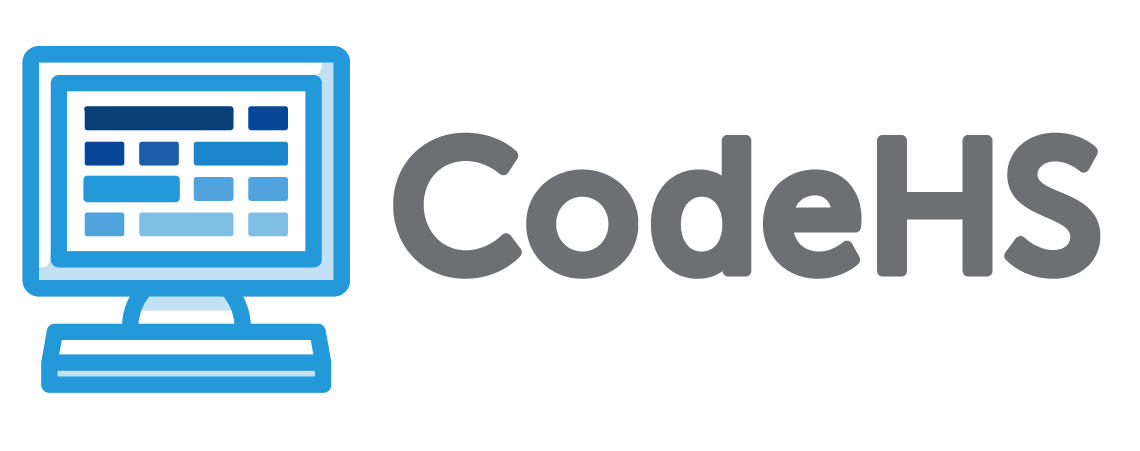- What is CodeHS?
- Curriculum
- Platform
- Assignments
- Classroom Management
- Grading
- Gradebook
- Progress Tracking
- Lesson Plans
- Offline Handouts
- Problem Guides
- Practice
- Create
- Problem Bank
- Playlist Bank
- Quiz Scores
- Rostering
- Integrations
- Professional Development
- Stories
- Standards
- States
- Alabama
- Alaska
- Arizona
- Arkansas
- California
- Colorado
- Connecticut
- D.C.
- Delaware
- Florida
- Georgia
- Hawaii
- Idaho
- Illinois
- Indiana
- Iowa
- Kansas
- Kentucky
- Louisiana
- Maine
- Maryland
- Massachusetts
- Michigan
- Minnesota
- Mississippi
- Missouri
- Montana
- Nebraska
- Nevada
- New Hampshire
- New Jersey
- New Mexico
- New York
- North Carolina
- North Dakota
- Ohio
- Oklahoma
- Oregon
- Pennsylvania
- Rhode Island
- South Carolina
- South Dakota
- Tennessee
- Texas
- Utah
- Vermont
- Virginia
- Washington
- West Virginia
- Wisconsin
- Wyoming
- State Standards
- Plans
- Resources
- Districts
- Share
- Contact Us
- Company

Virginia 6 Framework
Standards
| Standard | Description | |
|---|---|---|
| 6.1 | The student will construct programs to accomplish a task as a means of creative expression or scientific exploration using a block based or text based programming language, both independently and collaboratively, a) combining control structures such as if-statements and loops; and b) creating clearly named variables that represent different data types, including numeric and non-numeric data, and perform operations on their values. | Lessons |
| 6.2 | The student will trace programs to predict outcomes and debug (correct and improve) for correctness. | Lessons |
| 6.3 | The student will seek and incorporate feedback from team members and users to refine a program that meets user needs. | Lessons |
| 6.4 | The student will incorporate existing code, media, and libraries into original programs, and give attribution. | Lessons |
| 6.5 | The student will design projects that combine hardware and software components to collect and exchange data. | Lessons |
| 6.6 | The student will identify physical and digital security measures used protect electronic information. | Lessons |
| 6.7 | The student will explain how binary sequences are used to represent digital data. Exclusion: Conversions between binary and base-ten numbers are beyond the scope of these standards. | Lessons |
| 6.8 | The student will collect data using computational tools then clean and organize to make it more useful and reliable. | Lessons |
| 6.9 | The student will explain the insight and knowledge gained from digitally processed data by using appropriate visualizations. | Lessons |
| 6.10 | The student will use models and simulations to formulate, refine, and test hypotheses. | Lessons |
| 6.11 | The student will explain how computing has impacted innovations in other fields. | Lessons |
| 6.12 | The student will explore careers related to data. | Lessons |
| 6.13 | The student will explain why the speed of data transmission across the Internet can vary depending on the type of data being transmitted. | Lessons |
- What is CodeHS?
- Curriculum
- Platform
- Assignments
- Classroom Management
- Grading
- Gradebook
- Progress Tracking
- Lesson Plans
- Offline Handouts
- Problem Guides
- Practice
- Create
- Problem Bank
- Playlist Bank
- Quiz Scores
- Rostering
- Integrations
- Professional Development
- Stories
- Standards
- States
- Alabama
- Alaska
- Arizona
- Arkansas
- California
- Colorado
- Connecticut
- D.C.
- Delaware
- Florida
- Georgia
- Hawaii
- Idaho
- Illinois
- Indiana
- Iowa
- Kansas
- Kentucky
- Louisiana
- Maine
- Maryland
- Massachusetts
- Michigan
- Minnesota
- Mississippi
- Missouri
- Montana
- Nebraska
- Nevada
- New Hampshire
- New Jersey
- New Mexico
- New York
- North Carolina
- North Dakota
- Ohio
- Oklahoma
- Oregon
- Pennsylvania
- Rhode Island
- South Carolina
- South Dakota
- Tennessee
- Texas
- Utah
- Vermont
- Virginia
- Washington
- West Virginia
- Wisconsin
- Wyoming
- State Standards
- Plans
- Resources
- Districts
- Share
- Contact Us
- Company
